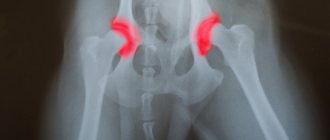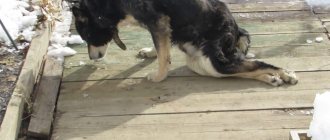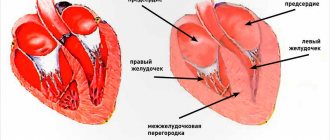What is rabies
Rabies is a fatal viral disease. The virus is a neutropic pathogen, that is, it multiplies and affects the central nervous system and brain. This is what explains the main clinical signs of the disease: aggression, convulsions, reflex excitability, paralysis of the limbs, increased salivation, and so on.
This dangerous disease affects both all warm-blooded animals and humans. The virus is insidious in that an infected pet becomes dangerous from the very moment of the bite until obvious signs of the disease begin to appear. Since treatments for this disease have not yet been developed, there is no hope for recovery. If the animal is not vaccinated, the disease always ends in death.
The outcome is always the same - paralysis and respiratory arrest.
Without a rabies vaccination, an animal is prohibited from participating in breeding, attending exhibitions, or performing service. It is without this vaccination that the animal will not be allowed to travel to other countries and will not be allowed to be transported by rail or air transport.
What is rabies in dogs?
Rabies is a severe pathology caused by rhabdovirus. It enters the body of a healthy warm-blooded animal after the bite of a sick animal. There is a risk of infection through saliva, but this occurs less frequently. The most dangerous are bites to the paws or head.
Now the main source of pathology is wild animals. They can carry rabies, but not get sick. Basically, the risk group consists of animals living near forests, steppes, forest plantations and in epizootologically unfavorable areas. It is important to understand that the danger of infection is almost everywhere. Therefore, the owner needs to pay attention to the condition and behavior of the dog.
Many wild animals in natural conditions not only preserve, but also spread the virus. When it enters the body, it moves at high speed along the nerve fibers, penetrating the spinal cord and brain. There it multiplies and accumulates in neurons. Then the brain tissue changes, hemorrhages and swelling occur, and degenerative changes in cells occur.
The movement of rhabdovirus through the body of an infected animal leads to rapid penetration into the salivary glands, and then it is released with saliva. This is the main reason for the spread of pathology in animals.
Routes of infection
At risk are pets living near steppes, forests and exposed to contact with wild warm-blooded animals (raccoons, foxes, wolves, etc.). In the city, the source of the spread of infection, as a rule, is stray dogs.
In most cases, infection with the rabies virus occurs after a healthy animal is bitten by a sick individual. But you can also become infected through saliva, blood and other fluids of an infected animal. Very often, when playing, dogs lightly bite each other’s nose, lips, and ears. And if the saliva of a sick dog gets through the smallest crack or wound (and there are any number of such on an animal’s body) into the body of a healthy animal, then consider that that’s it, the pet is 100% infected.
Even if a new acquaintance has no visible signs of illness, but it is at this moment that the rabies virus goes through the incubation period, then the dog is considered already sick. Be that as it may, it is unfortunate, but in the early stages it is sometimes very difficult to identify a sick animal. Therefore, try to protect your pet from contact with dogs that you do not know or whose health you are not sure about.
Despite the fact that rabies in dogs is spread in several ways, a bite is considered the only proven way of contracting the virus.
Ways of contracting rabies from dogs
Most often, this disease is transmitted through the bite of sick animals.
Together with the saliva of an infected animal, the virus that causes rabies penetrates into the wound. Once in the body, it spreads along the nerve endings, entering the spinal cord and then the brain. It has been established that the saliva of an infected animal can harbor this virus when rabies has not yet set in and the dog behaves as usual. Infection is possible several days before the appearance of obvious symptoms of the disease, and in some cases even two weeks.
Therefore, people and animals bitten by a dog that did not show signs of rabies at that time are still at risk of becoming infected: they should seek medical help and undergo treatment as soon as possible.
The degree of danger of a bite also depends on the location of the lesion: they are especially dangerous in places where there are many nerve endings. A bite to the head can lead to quick death. This is why this disease often develops rapidly in dogs: as a rule, they bite each other close to the head.
Doctors have identified cases where dog rabies was transmitted not only through a bite. Infection can occur even if a sick dog simply licks a fresh scratch on the body of a person or other animal. Infection is also possible when dissecting the body of a person who died from this disease and coming into contact with blood.
Stages of the disease
The mechanism of the onset and development of the disease can be divided into the following phases:
- Phase I – extraneural. It proceeds without visible signs.
- Phase II – intraneural. At this stage, the virus is already beginning to penetrate the nervous system, the brain and spinal cord. At this stage, the first clinical signs of rabies in dogs begin to appear.
- Phase III – dissemination. This is the phase of spread of the virus from the primary focus to all internal organs and blood. Accompanied by obvious symptoms of disease and death of the animal.
Length of incubation period
The incubation period of the disease can last from several days to several months. In most reported cases, it takes 2-2.5 weeks.
Hence the 14-day quarantine established in case of a bite. During quarantine, the dog is placed in a separate room, monitored and tested. In an apparently healthy dog, but already infected with rabies, the virus is already detected in the saliva on days 5-10, before the first clinical signs appear.
If a dog receives an annual rabies vaccination, then in most cases the disease does not occur and the dog is allowed to go home. If during this period of time the animal begins to show signs of illness, it is immediately euthanized.
The length of the incubation period may also depend on the following factors:
- The amount of virus that has entered the animal's body.
- Depth of the wound. The virus targets the central nervous system and the spinal cord or brain. The closer the bite site is to them, the faster the virus will reach its target.
- Resistance (resistance and resistance of the body to external factors).
- Age. Young dogs are much more prone to the disease than older dogs. As a rule, with annual rabies vaccination, stable immunity is developed by the 3rd year of a pet’s life. Until this time, the likelihood of developing the disease, even in a vaccinated young animal, is very high.
That is why young animals must be protected from contact with unfamiliar and stray dogs. How long a dog infected with rabies will live depends on how quickly the symptoms develop. The torment rarely lasts for 2 weeks. As a rule, the dog dies already on days 5-7, alas.
Forms and symptoms of the disease
Based on the signs of the development of rabies in dogs, not only stages, but also forms of the disease are distinguished. Each form is characterized by certain symptoms of the disease. All warm-blooded animals show similar signs of rabies. But the clinical picture has been best studied in dogs.
There are several forms of rabies. Veterinary medicine identifies three main ones, on which the clinical picture of the disease depends:
- Violent.
- Quiet (paralytic).
- Atypical.
But there are other forms of rabies. They are not so common and in the entire history of studying the disease they have been encountered only in isolated cases. These forms include:
- Returnable (remittive).
- Depressed.
- Abortive.
Violent form
The violent form of the disease lasts from 5 to 14 days and is divided into three stages:
Prodromal stage
The prodromal stage is considered a harbinger of the disease. It lasts from 12 hours to 3 days. This period begins with minor changes in the pet's behavior, and the symptoms are little noticeable to the owner. The opposite appears in already established behavior.
The previously sociable animal becomes unsociable. The dog seems to be offended by something. She becomes boring, apathetic, stops running and playing, but rather hides in a dark place and avoids people, reluctantly responding to the owner’s call.
But it happens quite the opposite. The previously calm dog begins to fawn, jump, lick his hands, and demand increased attention. These are the first warning signs that you should pay attention to.
After 2-3 days, the first signs of rabies begin to appear. The dog becomes restless and excited, and may jump up and bark for no apparent reason. Shortness of breath, increased salivation and frequent yawning, difficulty swallowing appear. The dog seems to be choking on something or trying to convulsively take in air with its mouth, as if it does not have enough oxygen. Perverted taste and appetite are often observed: the animal can eat inedible objects (soil, feces, stones, and so on). The gait may become unsteady, and the barking may become hoarse and abrupt.
Manic stage
The manic stage is the second and most dangerous stage of rabies in dogs. This is a period of excitement. The pet's condition worsens, apathy gives way to aggression. This stage is dangerous because the animal loses control over its behavior and its sense of fear completely disappears.
In a normal state, when a dog is about to attack someone, he always makes this clear: the ears flatten, the dog bares its teeth, growls, and the scruff of the neck stands up like a dinosaur’s. An animal infected with rabies attacks with lightning speed, silently, without warning. Pounces on other animals, attacks the owner, bites everyone indiscriminately. A sick dog begins to chew on everything: sticks, walls, iron. The grasping movements are so strong that it often leads to jaw fractures.
Bouts of violence, lasting several hours, are abruptly replaced by periods of oppression. Fear of light and water increases. The dog tries to hide in a dark corner, away from the window, lies apathetically, convulsing and greedily “swallowing” air. At this stage, partial paralysis of the laryngeal muscles may occur. It is difficult for the animal to swallow, barking becomes hoarse and intermittent. The lower jaw becomes paralyzed and droops, the tongue “falls out”, increased salivation appears, acquiring the consistency of foam. Strabismus and corneal clouding may occur.
But, despite the visible signs of weakness and apathy, any irritation can again lead to sudden aggression. The duration of the manic stage is 2-5 days, but, as a rule, already on the 3rd day the transition to the next stage begins.
Paralytic stage
The third stage of development of the violent form of rabies is paralytic. It can last 2-4 days. Due to paralysis of the larynx and lower jaw, the dog cannot eat, drink, or swallow saliva. Hence the abundant salivation flowing down the mouth onto the body.
At this stage, the dog no longer shows aggression. By 2-3 days, paralysis already spreads to the limbs. Dragging its paws, the animal tries to crawl into cover, to hide from everyone.
On the 3-4th day, paralysis already affects all internal organs. The animal falls into a coma, breathing stops, and the dog dies.
Silent form
The silent form of rabies in dogs is more common than the violent form. The dog is absolutely not aggressive. On the contrary, she appears excessively affectionate. Appetite remains normal, but swallowing may be difficult. It looks like the animal was choking on something. The dog becomes restless and worries about any reason. Increased salivation appears. A sick animal may experience unsteadiness and uncertainty in its gait.
With this form of the disease, muscle paralysis develops at lightning speed, within 2-3 days. First, paralysis of the pharynx and lower jaw occurs, and then the hind limbs. Death occurs within 3-4 days.
Atypical form
The atypical form of the disease, like the silent form, does not have a manic stage. The dog becomes weak and lacks appetite. Sometimes vomiting and/or diarrhea with bloody mucus may occur.
The pet's condition deteriorates slowly and can take up to 2-5 months. Unfortunately, due to the absence of obvious signs and a sharp division into stages, most often the pet owner does not pay due attention to this form of rabies, citing the fact that the animal has a simple malaise. And wasted time can lead to serious consequences. In the atypical form of rabies, the diagnosis is made posthumously.
The following forms of rabies are not as common and are quite rare. But every pet owner should know the possible signs of this dangerous disease.
Return form
The recurrent form of the disease is characterized by the fact that it manifests itself in an abrupt course of the disease. Symptoms disappear and then appear again. The dog refuses food and tries to hide from everyone. During the period of exacerbation, symptoms characteristic of a violent form of rabies may be observed.
The interval between attacks can last from several days to several weeks. After an apparent recovery, signs of the disease appear again with even greater intensity.
Depressive form
The depressive form occurs quite quickly. At the beginning of the disease, the dog maintains a good appetite, behavior, and there is no aggression. Only a slight weakness may be noticeable. The animal gets tired quickly. Then the condition worsens sharply. Increased salivation, cough, paralysis of the lower jaw, and lameness appear. Death occurs within 3-4 days.
Abortive form
The abortive form is a fairly rare and poorly studied form of rabies. Already at the second stage of the disease, the animal fully recovers. But such cases are rare. So if you detect signs of rabies in a dog, you should not hope for a miracle.
Forms of manifestation of rabies infection, main symptoms
Rabies in dogs has been studied in most detail. Veterinary medicine identifies three main forms on which the clinical picture of the disease depends:
- violent;
- quiet (paralytic);
- atypical.
We recommend reading: Selemag and Selemag O for productive animals - instructions for use
There are three more forms of rabies that are not widespread, and throughout the history of registration of the disease they have occurred in isolated cases:
- recurrent (remittive);
- depressed;
- abortive.
The speed and severity of the manifestation of clinical signs of rabies in dogs depends on the density of nerve elements at the sites of bites, the depth of the bite and the distance from the head. The closer to the head the bite is, the faster the disease develops and the more pronounced the symptoms.
Violent form
It occurs very often, lasts from 5 to 14 days and has three stages of development:
Prodromal
- minor manifestations of the first symptoms of rabies;
- inactivity, lack of response to calls and touches;
- contrast in behavior: a sociable animal suddenly becomes non-contact, and an obstinate animal becomes excessively affectionate;
- swallowing air with the mouth (similar to yawning);
- drooling may or may not increase;
- increased reaction to extraneous noise, light;
- perversion of appetite;
- duration 2-3 days.
Manic
- obvious signs of rabies, the dog is most dangerous during this period;
- desire to gnaw on everything, persistently bite;
- complete absence of fear;
- partial paralysis of the lower jaw, larynx, inability to swallow;
- salivation;
- aggression abruptly gives way to peace;
- photophobia and fear of water (one of the main signs of rabies);
- hoarseness when trying to bark;
- strabismus and clouding of the cornea may appear;
- periodic convulsions;
- lasts 3-5 days.
Paralytic
- complete paralysis of the larynx and lower jaw, inability to eat and drink;
- lack of aggression, inactivity;
- periodic convulsive attacks;
- paralysis of the hind limbs (the animal drags its legs behind it);
- paralysis of internal organs and coma;
- the stage lasts up to 2 days, the dog dies.
Silent (paralytic) form
- occurs more often violent;
- there is excessive affection, the dog tries to lick your face;
- the sense of caution disappears, the animal comes close to the person and caresses;
- gradual increase in anxiety;
- lightning-fast development of muscle paralysis;
- paralysis of the jaw and inability to close it or swallow;
- profuse drooling;
- death occurs within 2-3 days.
Atypical course
- atypical signs;
- lack of aggression, lethargy and weakness;
- disorders in the gastrointestinal tract - bloody diarrhea, vomiting, lack of appetite;
- gradual deterioration of the condition;
- is rare, can last up to 2-5 months;
- the diagnosis is usually made posthumously.
Recurrent (relapsing) course
- wave-like course - symptoms either disappear or increase with even greater intensity;
- the intervals between exacerbations take 3-5 days (sometimes up to 2 weeks);
- During the period of exacerbation, signs similar to the violent form of rabies are observed.
Depressive form
- lack of aggression;
- appetite is maintained;
- the dog is limping and coughing, as if he was choking on something;
- salivation;
- sudden paralysis of the larynx and other internal organs;
- death occurs within 3-4 days.
Abortive form
- in stage 2, recovery is observed;
- isolated cases, insufficiently studied.
Important: of all the symptoms of rabies, it is enough to remember a few basic ones, which are usually suspected of rabies:
- aggression or excessive affection;
- salivation,
- slack jaw,
- corneal clouding,
- strabismus,
- rabies.
Main symptoms of rabies
Rabies can take several forms. But each of them is characterized by common symptoms, which can be used to identify that the animal has become infected with this particular disease:
- A sharp change in habitual behavior (aggressiveness or excessive affection).
- Fear of light and water.
- Labored breathing.
- Increased salivation.
- Paralysis of the muscles of the jaw and lower limbs.
- Strabismus and corneal opacity.
How does rabies manifest in dogs?
Symptoms of rabies include severe weight loss, increased salivation, a protruding tongue, clouding of the cornea and squinting. As the pathology develops, paralysis of the hind legs appears, after the heart and respiratory muscles. This inevitably leads to the dog's death.
It is important to distinguish between rabies and the nervous form of distemper, Aujeszky's disease, and encephalitis. With distemper, there is also epilepsy and paralysis, but paralysis of the lower jaw does not occur. Rhinitis and conjunctivitis are not observed with rabies.
Aujeszky's disease is also called pseudorabies. It causes severe itching and scratching. Death occurs within three days. Aggression is directed towards things and oncoming pets, but not towards people.
Prevention of rabies
To date, the only effective preventive measure against rabies is vaccination.
Dogs are vaccinated annually, starting at 3 months.
With annual vaccination, stable immunity to the disease is developed by the third year of life.
Therefore, young animals, even those vaccinated against rabies, should be given special attention and control of communication with other dogs.
The vaccine protects the vaccinated animal in 98% of cases. And although the likelihood of infection is very low, you should immediately contact a veterinary clinic if your pet is bitten by a stray dog.
Rabies is one of the most dangerous diseases that leads to the death of both the dog and the person affected by its bite. Therefore, at the legislative level, every four-legged owner is required to vaccinate his pet against this disease.
By law, rabies vaccination is carried out free of charge in state veterinary institutions at the place of registration of the pet owner.
Several drugs may be offered to choose from: domestic and imported. In fact, both domestic and imported drugs are equally effective.
If you are going to travel with your dog only in Russia, then you can choose any of the proposed drugs.
If you are going to travel with your four-legged dog to other countries, then it is better to give preference to an imported drug approved for use in other countries.
During the vaccination period, the animal must be completely healthy. It needs to be dewormed 10-14 days before the planned vaccination date. This is due to the fact that sick and weakened pets do not develop immunity to the administered drug, that is, the vaccination will be useless.
Preventive measures include walking on a leash in certain places where you are sure there are no stray dogs or wild animals. Young dogs under 3 years of age should be protected as much as possible from communicating with strangers, and even more so with stray dogs.
Remember, once a pet is diagnosed with rabies, treatment is no longer possible. By carrying out annual vaccinations, you not only protect your beloved tailed friend, but also the life and health of all family members.
Is it possible to cure a dog for rabies?
No. An animal that shows signs of rabies cannot be treated. A virus that enters the body instantly multiplies and damages the body at the cellular level. In a matter of days, it reaches the brain cells, causing inflammation in it, and, as a result, paralysis and respiratory arrest.
If rabies is suspected, the dog is placed in a quarantine box for 14 days to confirm or refute the diagnosis. People who have had contact with the “suspicious” four-legged animal are vaccinated, and the animals are isolated. No treatment is carried out, as this is a huge risk for the clinic staff.
If the condition worsens during the quarantine period, the dog is euthanized so as not to prolong the suffering. The diagnosis is confirmed only posthumously.
Diagnosis of the disease
A preliminary diagnosis is made on the basis of clinical signs, anamnesis data (interrogation of the owner) and data from the epizootic rabies situation in the territory from which the animal was delivered and where the infection actually or supposedly occurred. Epizootic situation data is a complete collection of information on rabies infection: whether similar cases have been registered and how many, as well as whether rabies has been recorded here at all, how long ago and whether it exists now.
It should be borne in mind that there are diseases that are very similar in symptoms to rabies, and they can only be excluded by a veterinary specialist:
- Aujeszky's disease;
- brain tumors;
- meningitis;
- toxoplasmosis;
- poisoning with toxic substances (for example, organophosphates or diminazene);
- infectious canine hepatitis;
- tetanus;
- postpartum aggression of a recently whelped dog.
We recommend reading: Atopy in veterinary medicine - symptoms and treatment methods
At the slightest suspicion of infection, the dog should be taken to the nearest veterinary institution for examination and clarification of the diagnosis.
Alas, the final diagnosis is made after the death of the infected animal. The corpse of a dead animal or its head is sent for research. In the laboratory, histosections are made from the brain of the corpse and specific inclusions are identified - Babes-Negri bodies, which clearly confirm the presence of rabies.
No lifetime tests for rabies are carried out on dogs! There is an analysis to detect antibodies to the pathogen. It is carried out only for healthy vaccinated dogs that are being prepared for export to rabies-free countries, where this is required to be noted in the animal’s passport upon entry.
What to do if a dog is bitten
If your pet is bitten by an unknown stray dog, you need to act as follows:
- Bring your dog home and carefully examine the wound. Since the rabies virus can be transmitted through the animal’s saliva through small cuts and cracks on the body, personal protective equipment must be used during examination. Put rubber gloves on your hands and a medical muzzle on your dog.
- The hair around the wound must be cut off, and the wound itself is washed generously with soapy water with a high concentration of laundry soap (1 part soap to 10 parts water). It is best to thoroughly rinse the wound under pressure. To do this, place the soap solution in a syringe or large syringe (without a needle) and rinse the wound under pressure several times.
- After pre-treatment of bites, you should call a veterinarian at home.
If the dog is vaccinated, then it is monitored and placed in a 14-day quarantine in an isolation ward at a veterinary clinic, or in a separate room at home.
If the animal is not vaccinated, then it is immediately given an anti-rabies vaccine (a special drug for rabies, when administered, the body develops immunity). Next, the four-legged animal is also subject to 14-day quarantine control.
If during quarantine the dog does not show signs of rabies, then the animal is vaccinated against rabies (regardless of whether the dog was previously vaccinated or not) and released home.
If during observation symptoms of the disease begin to appear, the animal is euthanized. The diagnosis is confirmed after death.
If your pet is bitten by an unknown dog
If your dog was bitten by an unknown mongrel from the street, the algorithm of action is:
- Bring your pet home and inspect the bite site, be sure to use personal protective equipment (rubber gloves and a face mask), as well as a muzzle for the animal.
- The hair around the wound must be cut off, and the bite site itself is washed for a long time with a concentrated aqueous solution of laundry soap (1 teaspoon of soap per 10 parts of water). It is ideal to do this under pressure, i.e. draw the solution into a syringe without a needle or syringe and rinse several times. If the wound is not deep and does not cause severe pain in the dog, you can directly soap it, let it sit for a few minutes and also rinse it off under pressure. The edges of the wound can be treated with brilliant green or iodine (only the edges!).
- After the initial treatment of the resulting bites, you should call a veterinarian at home.
- If the dog is vaccinated, quarantine control will be established over it, placing the animal in an isolation ward at a veterinary clinic or in a separate room at home.
- If the dog does not have a vaccination, then it will be given it immediately and repeated after 2 weeks, but will also be isolated for observation. The observation period is 10-14 days.
- After the quarantine period has expired and if there are no signs of rabies, the animal will be released home.
- If clinical signs of illness begin to appear during observations, the animal must be euthanized unless it dies on its own. The diagnosis will be confirmed by laboratory tests of the corpse's brain.
We recommend reading: Vetranquil 1%
If the fact of infection through a bite was not recorded, but the usually calm dog suddenly began to behave inappropriately, and the symptoms indicate rabies, then the algorithm of actions will be as follows:
- Immediately isolate the animal in a separate room.
- Call a veterinarian for a diagnosis.
- Place the dog in quarantine for 10-14 days.
- If there are no signs of illness after quarantine, the dog is vaccinated (regardless of whether it is vaccinated) and sent home.
- If the animal dies after symptoms of the disease appear, the diagnosis is confirmed by laboratory testing.
What to do if a dog bites a person
Rabies is classified as a deadly disease for both animals and humans. If you are bitten by an unknown dog, the algorithm of actions is as follows:
- If the blood vessels are not severely damaged, allow the blood to drain a little to remove as much virus particles as possible.
- Next, just as in the case of caring for a bitten pet, you must immediately wash the wound with a concentrated soap solution under pressure. Rinsing will be effective if done within an hour after the bite.
- Then you should treat the wound with hydrogen peroxide, apply a bandage and seek medical help.
- Several years ago, a long course (more than 40 injections) into the abdominal cavity was prescribed against rabies. Now a course of 7 rabies vaccines is prescribed to the shoulder area.
If, after being bitten by a stray dog, a person does not consult a doctor in time, then in case of infection and the first signs of rabies appear, it will not be possible to save him.
What the Law Says
According to Art. 10.6 of the Code of the Russian Federation on Administrative Offenses, dog owners are responsible for violating veterinary rules. Violation of animal quarantine rules or other veterinary and sanitary rules entails the imposition of an administrative fine for citizens in the amount of five hundred to one thousand rubles, for officials - from three to five thousand rubles.
Agree, not such huge amounts. But no amount of money can compare with the danger of losing your beloved pet.











